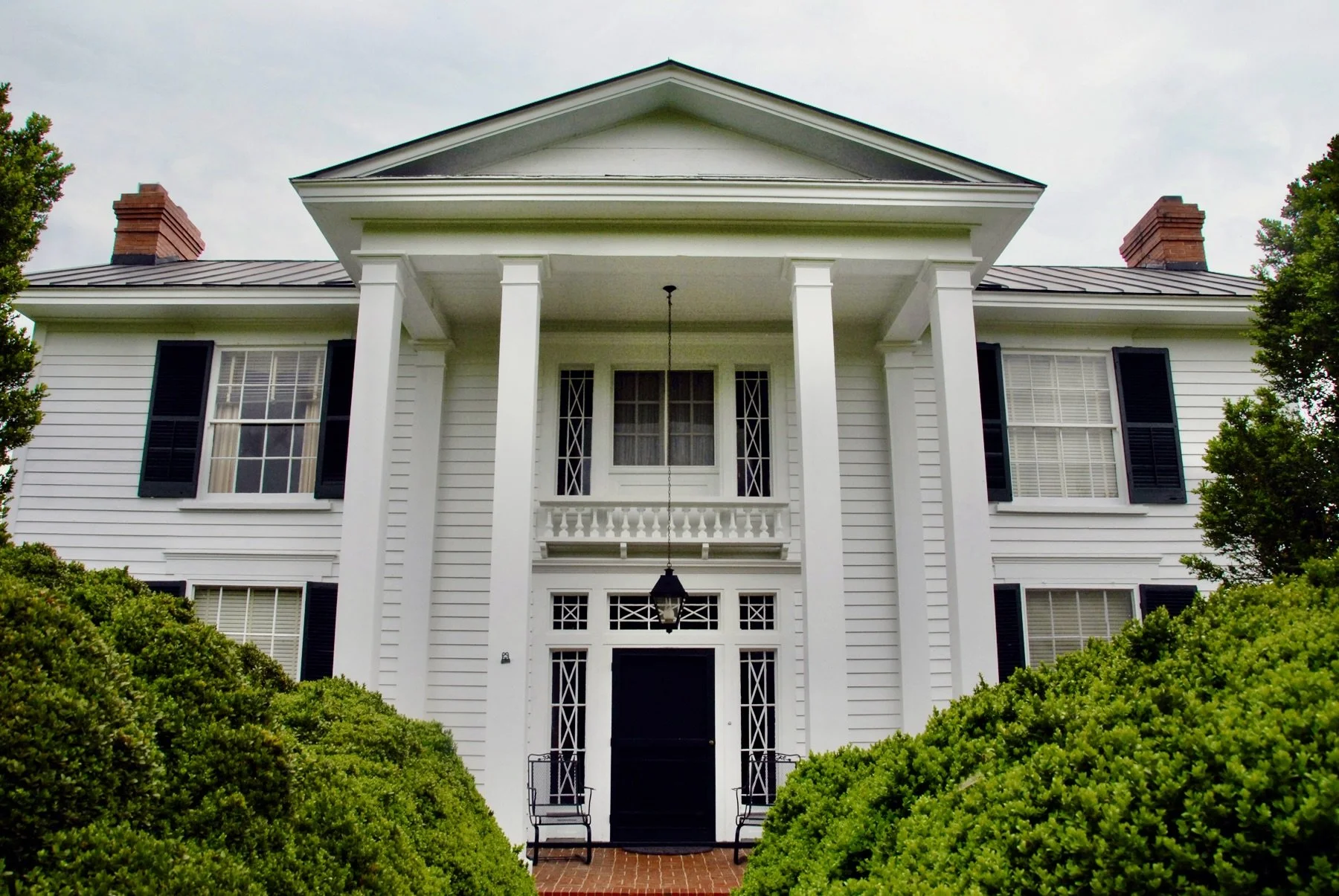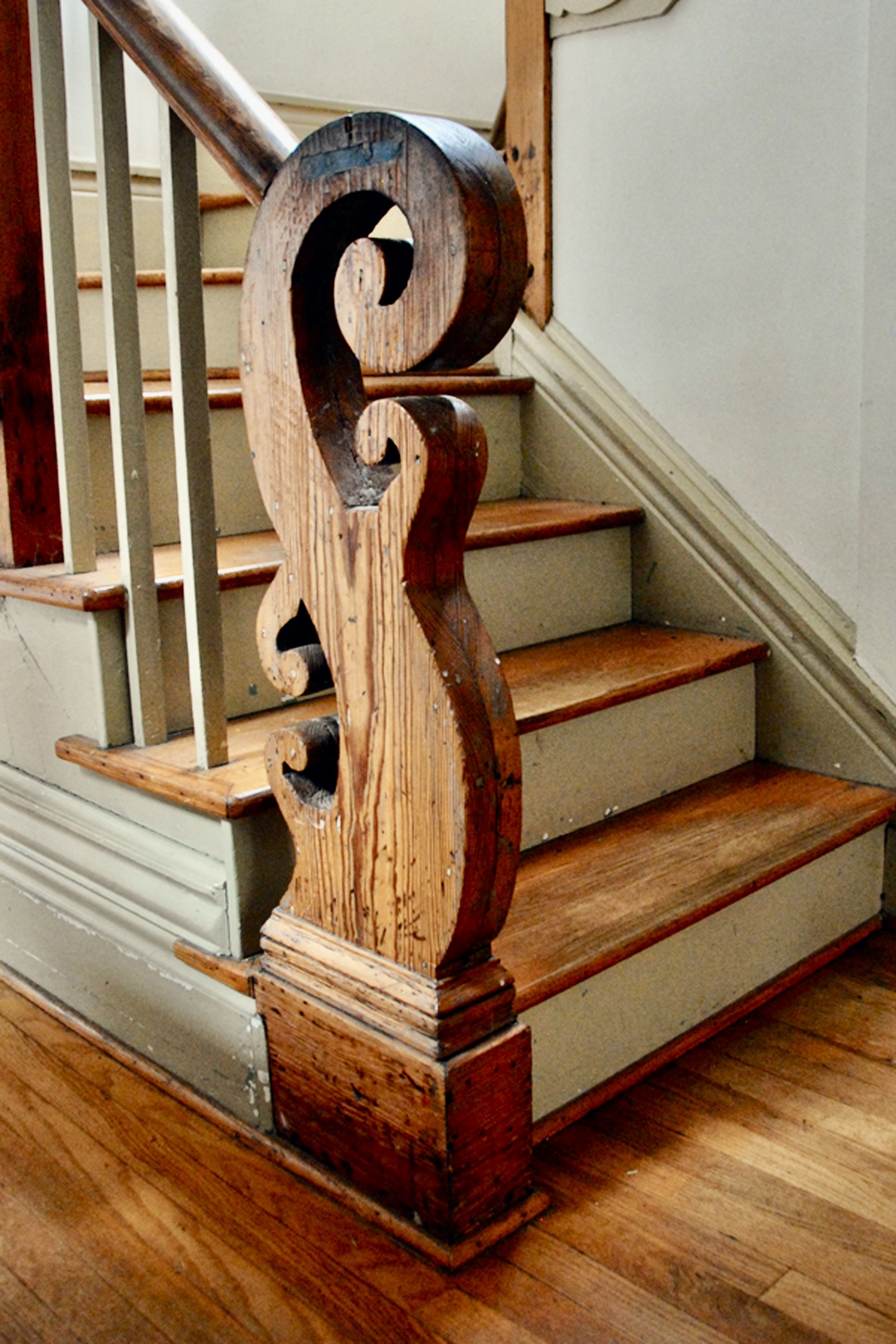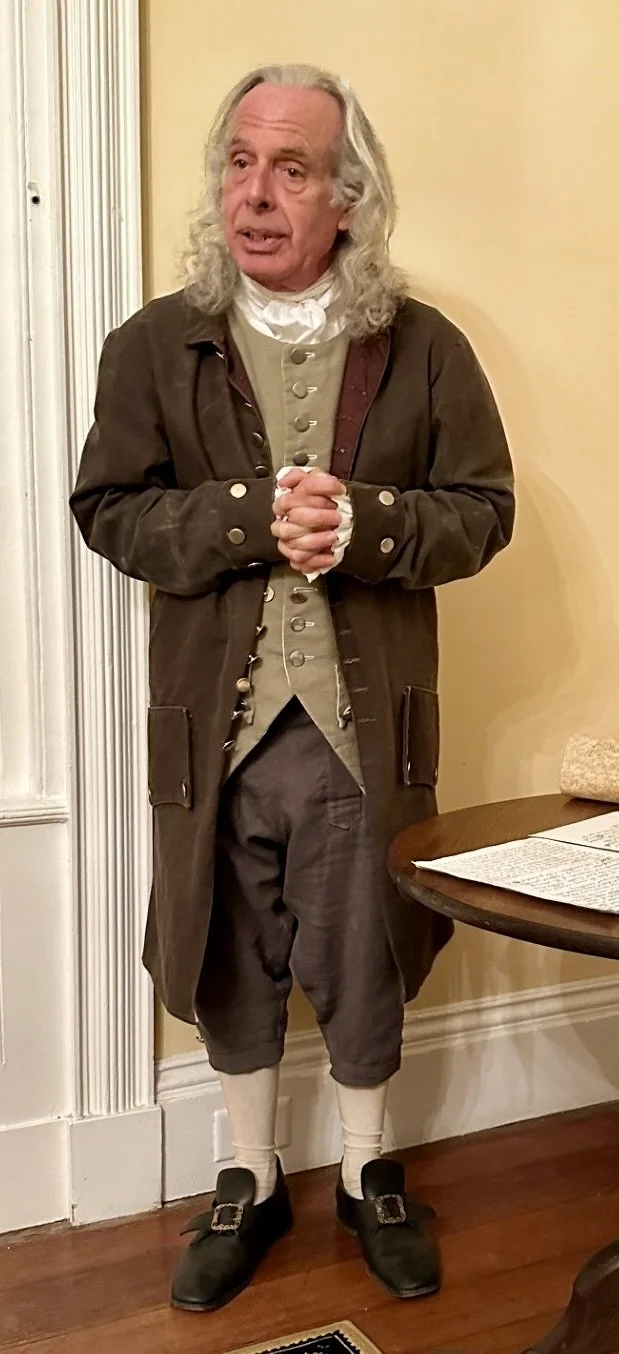Lynwood Owner Hosted
Historical Society’s Annual Meeting
Lynwood, a Greek Revival home, thought to have been built circa 1854, was the site of Halifax County Historical Society’s 2025 Annual Meeting for members and their guests/potential members. The meeting was held Sunday, October 19, 2025, at 2:00 p.m. The home, owned by the Wilkins family for five generations, is located at 2083 Wilkins Road in the Turbeville area (Route #699).
Lynwood, Circa 1854
(AJ Bohanon photo)
The home was built by local carpenters and brothers James and Abner Richardson at the time the Milton, North Carolina workshop of Free-Black carpenter Thomas Day was in full production. Evidence of Day’s architectural elements are found at the entranceway with brightly colored glass panes in the sidelights and transom surrounding the front entrance and on the balcony above, although doors on the upper porch have been replaced with double windows. On the interior are examples of Day’s signature woodwork around windows and doors, the “S” newel and stair brackets on the front stair, and chamfered paneled doors. Among the Wilkins’ papers can be found several receipts for work completed by Thomas Day.
Signature Thomas Day “S” Newel
(Aj Bohanon Photo)
Lynwood has several outbuildings, including the kitchen at the rear of the house that once was attached at the back of the house and two small dependencies to the right of the house. On the drive to the home are several late-nineteenth century log tobacco barns and a tenant house that was formally an early school in the Turbeville community. In a cemetery on the farm there is only one marked grave, that of A. Archibald Richardson, son of Abner Richardson, dated 1856. There is a receipt for his coffin found among the Wilkins’ family papers.
The kitchen at Lynwood
(AJ Bohanon Photo)
Lynwood, along with 370 acres, was sold to W. Banks Wilkins who left the farm to his son, William W. Wilkins, Sr. His son, W. W. Wilkins, Jr., and wife Margaret Granger Wilkins, left the house at their death to their son, W. W. “Bill” Wilkins III. Today, W. W. “Will” Wilkins IV and his children, the fifth generation of Wilkins, are the owners of this stately home.
______________________________
Patriot John Penn, Declaration of Independence signer, portrayed for 2025 spring meeting
Mark Pace, Speaker, Jump-Starts Halifax County’s VA250 Efforts.
Mark Pace, historical interpreter, portrays Patriot John Penn, one of 56 colonial leaders who signed the Declaration of Independence in 1776.
Members of the Halifax County Historical Society and their guests/potential members were “enlightened” Sunday, April 27, 2025 as they listened to “Musings and Reflections on the Declaration of Independence and the Current State of our Nation in the Year 1788.”
Historical interpreter Mark Pace, portrayed Patriot John Penn, a champion of liberty and one of 56 American Patriots who signed the Declaration of Independence in 1776. Just two weeks before the meeting, Pace was honored by the Granville County Historical Society in Oxford, North Carolina, for his impersonations of Penn in venues across North Carolina, Southside Virginia, and various state libraries and museums. For his Halifax talk, Pace was in period costume, complete with a parchment copy of the declaration. Pace gave Penn’s “talk of the day” concerning the trials of adopting the document, as well as discussing his efforts to assist the Patriot cause during the Revolutionary War.
Pace, who is a member of Halifax County’s Historical Society as well as the Granville County Historical Society, majored in history at UNC at Chapel Hill. After graduation in 1984, Pace switched directions to work as an art director and illustrator in advertising and later started his own freelance advertising and illustration company. Since retiring, he has been the North Carolina Room Specialist at the Thornton Library in Oxford, NC.
“With a passion for researching local history for over forty-five years,” Pace remarked, “I consider it an honor to be the caretaker of one of North Carolina’s most celebrated local history and genealogical libraries.” For more information about the Society’s programs and activities, contact Society President Ralph Alderson at 434-770-4333 or via email at hchsvirginia@comcast.net .
Medal given to Society
Richard and Rebecca Leake Present Medal of Honor
Richard and Rebecca Leake, members of the Halifax County Historical Society, are shown beside a framed Medal of Honor and Certificate belonging to Colonel Henry Eaton Coleman, which the couple presented to the Society at the annual meeting held October 17. Now housed at the Chaffin House (the Society’s headquarters), the medal, certificate and likeness of Colonel Coleman, acknowledge the important contribution made by the Colonel who drew the strategic battle plan for the June 25, 1864 Battle of Staunton River Bridge. The only battle fought on Halifax County land featured a greatly outnumbered band of Confederates who held the crossing during four Union charges before the approximately 5,000 Union troops retreated. The strategic military maneuver is now studied at several military schools. Mrs. Leake, a descendant of Colonel Coleman, and her husband also hosted a reception at the Chaffin House following the annual meeting.
Christmas Bulbs still available at Chaffin House.
Chaffin House
110 Mt. Rd, Halifax, VA 24558
Books, ornaments, puzzles and many historic items are also for sale. When visiting, inquire about becoming a member.





